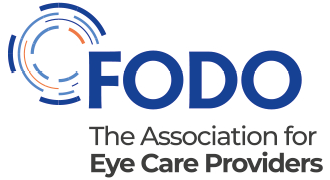Updates
Background
This guidance aims to help you manage international patients accessing NHS care and includes:
- Guidance on cross-border healthcare and patient mobility in Europe.
- Guidance on overseas visitor charging regulations and eye care services - England
Guidance on cross-border healthcare and patient mobility in Europe
European citizens have long had access to healthcare in other EU Member States, through the European Healthcare Insurance Card (or E111 system). These rights and entitlements evolved and were incorporated into EU law through Directive 2011/24/EU and the National Health Service (Cross Border Healthcare) Regulations 2013.
Scope of this guidance
This guidance covers England, Wales and Northern Ireland; separate guidance is available for Scotland. This guidance applies to countries in the European Economic Area (EEA) [1].
Reciprocal arrangements with non-EEA countries are not covered by this guidance.
Implications for primary eye care
Optical practices and practitioners will have experienced patients attending for eye care from overseas, for example where they have difficulty accessing this in their home country, or if they experience new symptoms while in the UK, damage their spectacles or experience a problem with their contact lenses. This guidance is intended to advise you on:
- the provisions you should be aware of when providing care to patients who attend your practice from another EEA member state
- where you should direct UK residents to for further information when they ask about access to treatment in another EEA country.
This guidance is not intended to be a complete summary of the law governing cross-border healthcare and patient mobility in Europe; for further information, please refer to the Department of Health guidance [2].
Optical practices and practitioners are also reminded that the Sight Testing Regulations 1989 [3] and other NHS and GOS requirements remain in place.
If you have any questions about those or how they overlap, please contact [email protected].
Inbound patients - patients coming to the UK
Overseas visitors to the UK (i.e. people not normally resident in the UK) are charged if they use certain NHS services [4]. Directive 2011/24/EU and the NHS (Cross Border Healthcare) Regulations 2013, make provision that patients who receive healthcare outside their home country must pay privately for that care where a charge is applicable but, if that cost is normally covered in their home country, they can then seek reimbursement from their authorities at home. Charges apply to all secondary care, but overseas visitors are not charged for many primary care services.
Patients from other European countries can, and frequently do, attend at optical practices across the UK for sight tests, contact lens fitting or to have an optical appliance dispensed. As practices and practitioners will appreciate, not every UK citizen automatically qualifies for General Ophthalmic Services (GOS); to do so they must satisfy one of the criteria which determine eligibility for an NHS sight test (and entitlement to a GOS3 voucher) [5]. Any EEA patient who asks for a sight test, contact lens fit or to have an optical appliance dispensed, will be entitled to NHS treatment if they meet the normal eligibility criteria. Those who do not meet the criteria will need to pay privately.
An EEA patient who presents for any other community eye care in the UK (i.e. enhanced services, if they are not provided under the direction of a hospital) will also be entitled to any NHS services free of charge, but where charges apply to that service they will need to pay privately. Charges also apply for prescribed medication dispensed via a community pharmacy and for treatment in a hospital ophthalmology department.
When providing eye care to overseas visitors for which a charge applies, optical practices must
- apply any fees in a non-discriminatory manner
- provide EEA patients with a completed prescription, or contact lens specification (if applicable)
- provide a receipt which gives a full breakdown of the charges, which the patient can use for reimbursement at home if appropriate.
Charges should be the same as for private domestic patients. Most practices will have a table of fees to charge for private patients for particular services, such as a dry eye assessment or glaucoma referral refinement. For services where there is no comparable price for domestic patients, the price must be based on objective, non-discriminatory criteria. If an appropriate NHS fee would cover the costs to the practice, for example for a PEARS/ACES/MECS service, it may be administratively easier to charge EEA patients that amount as a private fee, although this will be at the practice's discretion. Practices should also retain secure patient records, as they would for any patient. It is important to document whatever fee the EEA patient was charged because this may be checked subsequently during reimbursement.
Outbound patients - patients who ask about accessing eye care in another EU country
For various reasons, following their sight test, patients may ask about onward referrals or treatment elsewhere in Europe, which they are entitled to do. As a general rule, if a patient is entitled to care at home under the NHS, they are entitled to receive it overseas funded by the NHS. The patient will pay up front for their healthcare and then claim reimbursement from their home country. In terms of reimbursement they will only receive what it would have cost if the treatment had been provided in their home country or the actual cost if this is a lesser amount.
Patients do not have to seek prior approval before accessing healthcare in another EU country unless it appears on the list of treatments requiring prior approval. Treatments subject to prior approval differ from country to country and the National Contact Point will be able to provide details. Most ophthalmic conditions affecting children and adults require prior authorisation [6].
If a patient asks about treatment outside the UK, you should explain that this may be an option and they should seek further information about prior authorisation and clarification about reimbursement from the relevant NHS contact point or England, Wales, Scotland and N Ireland contact points, listed in Annex 2.
From a clinical perspective, you should advise patients where their condition might require a series of visits to the hospital, for example if they have a cataract, and they may need to travel back and forth between the UK and other EEA country. You are advised to note that you have given the patient this information on the patient record.
If a patient asks about having an NHS sight test in another EEA country, you should direct them to the contact points in Annex 2 for further information.
Content of a cross-border prescription
According to a parallel Directive 2012/52/EU [7], a prescription for medical devices (which include spectacles, contact lenses and LVAs) which is intended to be used overseas must contain the following information:
Identification of the patient
- Surname(s)
- First name(s) (written out in full, i.e. no initials)
- Date of birth.
Authentication of the prescription:
- Issue date
Identification of the prescribing health professional:
- Surname(s)
- First name(s) (written out in full, i.e. no initials)
- Professional qualification
- Details for direct contact (email and telephone or fax, the latter both with international prefix)
- Work address (including the name of the relevant member state)
- Signature (written or digital, depending on the medium chosen for issuing the prescription).
The OC also advises including the following clinical data in prescriptions intended to be usedoverseas:
- Power of vision correction if required (including spherical, cylindrical components and axis as required)
- For powers over +/- five dioptres, the back vertex distance at which the refraction was done
- Date of prescription and time limit
- The registration number of the prescribing eye care professional (and country of registration)
- Whether the eye examination or sight test was NHS funded or private.
If your current prescription format does not include all of this, the Optical Confederation advises incorporating this information into your regular private and NHS prescriptions in case a patient wishes to use it elsewhere in the EEA.
The same information should appear on optical prescriptions from elsewhere in the EEA, which a patient might bring to the UK to have dispensed.
Any written information from an overseas qualified practitioner relating to the patient's contact lens needs, or any contact lens specification subsequently issued in the UK, should contain exactly the same details as if the patient were a UK national.
Note: These requirements have also been incorporated into the ECOO Guidelines for Optometric and Optical Services, therefore all providers across Europe should include this information as a minimum in issued prescriptions which can be used across Europe [8].
FP10 Prescriptions
Independent prescribing optometrists should be aware that the FP10 form has been updated in line with the cross-border requirements. A copy of the new version is reproduced in Annex 3. Please ensure you are using the correct format when issuing a prescription for medicines.
Patients who attend with an overseas spectacles prescription
Practitioners should use their professional judgement to determine whether they are satisfied with any prescription prior to dispensing it. This can be difficult to ascertain from an overseas prescription, in particular if it is written in a language you are not familiar with. When determining whether to dispense such prescriptions, you should bear in mind the likelihood of an error in the prescription, and subsequent inconvenience for the patient should their spectacles or contact lenses need to be re-ordered. In line with the College of Optometrists guidance [9], if there is any uncertainty, you are advised to contact the original prescribing clinician for clarification. This would allow you to appreciate better the circumstances in which that prescription was issued. If it is not possible to speak to the original prescriber, it may be easier to provide a further private sight test or eye examination before dispensing to the patient. This is especially relevant to high prescriptions where the back vertex distance is missing.
Similarly, if there is any subsequent non-tolerance with spectacles dispensed to an overseas prescription you should contact the original prescriber to agree a course of action and discuss this with the patient. If it is not possible to speak to the original prescriber, or the issue remains unresolved, you should retest the patient.
You should also bear in mind the potential for a patient to suffer from non-tolerance if they have a pair of spectacles dispensed based on a repeat sight test, especially if they will shortly return home.
Patients who attend with an overseas contact lens prescription
If the patient has insufficient written information from a qualified practitioner for their contact lens needs to be fully understood, you should try to contact the original prescribing practitioner for clarification in line with the advice above for spectacle prescriptions. If that fails to resolve the problem, then a new sight test and a new fitting of contact lenses is required to issue a UK contact lens specification because that would be a situation where a fitter is seeing a new patient who has previously been fitted elsewhere.
Updates
Originally published: September 2014
Reviewed: under review
Next review date: under review
Info: Currently under review following the UK's decision to leave the European Union.
Guidance on overseas visitor charging regulations and eye care services - England
The purpose of this guidance is to clarify that:
- Overseas visitors should not be charged for GOS services
- There is no nationality or residency requirement for someone to be eligible for GOS.
The National Health Service (Charges to Overseas Visitors) Regulations 2015 were amended in 2017 to extend charging for overseas visitors. Since 23 October 2017 any organisation providing NHS funded services is required to make and recover charges to overseas visitors for services they have received unless they are primary care services (as set out in the NHS Act 2006) or an exemption applies.
GOS services are primary care services and therefore do not fall within the scope of the charging regulations.
In addition, the eligibility criteria for NHS sight testing service, set out in the Primary Ophthalmic Services Regulations 2008, include no nationality or residency requirements. Therefore, if someone asks for an NHS funded sight test and they meet any of the criteria (e.g. they are under 16 years of age), then they are eligible for NHS funded GOS services regardless of their nationality.
As always, you can only provide MECS to people who are registered with a GP in the relevant CCG area. If a patient who is eligible for MECs via GP registration is an overseas visitor, you should not charge them.
Updates
Originally published: 9 August 2018
Reviewed: NA
Next review date: 9 August 2022
References and notes
The next review was originally planned for 9 August 2021. This was changed due to prioritising work during the pandemic.
[1] The EEA includes all 28 countries of the European Union plus Iceland, Liechtenstein and Norway[2]https://www.gov.uk/government/uploads/system/uploads/attachment_data/file/252940/Cross_Border_Healthcare_Information.pdf
[3] http://www.legislation.gov.uk/uksi/1989/1230/contents/made
[4] The National Health Services (Charges to Overseas Visitors) Regulations 2011, as amended
http://www.legislation.gov.uk/uksi/2011/1556/made
[5] Further information on NHS eligibility for England is available here:
http://www.nhs.uk/chq/pages/895.aspx?CategoryID=68&SubCategoryID=157
[6] Department of Health (2013) Cross Border Healthcare and Patient Mobility in Europe
[7] http://ec.europa.eu/health/cross_border_care/docs/impl_directive_presciptions_2012_en.pdf
[8] http://www.ecoo.info/professional-guidelines/
[9] See College of Optometrist Guidelines Section A5, Paragraph A5.04 on 'Intra and Inter-Professional Relationships'.

 Patients and public
Patients and public
 Policymakers
Policymakers Members
Members News and views
News and views
